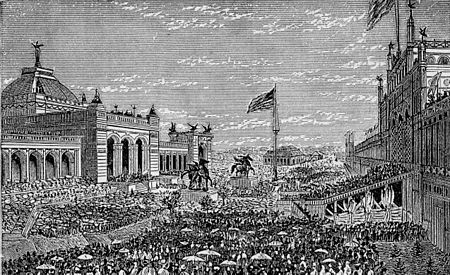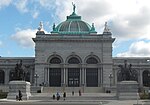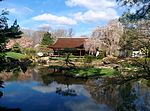Centennial Exposition
1876 festivals1876 in Pennsylvania1876 in the United StatesCentennial ExpositionHistoric American Buildings Survey in Philadelphia ... and 5 more
Regional centennial anniversariesUse American English from June 2022Use mdy dates from June 2022West Fairmount ParkWorld's fairs in Philadelphia

The Centennial International Exhibition, officially the International Exhibition of Arts, Manufactures, and Products of the Soil and Mine, was held in Philadelphia from May 10 to November 10, 1876. It was the first official world's fair to be held in the United States, and coincided with the centennial anniversary of the Declaration of Independence's adoption in Philadelphia on July 4, 1776. It was held in Fairmount Park along the Schuylkill River on fairgrounds designed by Herman J. Schwarzmann. Nearly 10 million visitors attended the exposition, and 37 countries participated in it.
Excerpt from the Wikipedia article Centennial Exposition (License: CC BY-SA 3.0, Authors, Images).Centennial Exposition
Avenue of the Republic, Philadelphia
Geographical coordinates (GPS) Address Website Nearby Places Show on map
Geographical coordinates (GPS)
| Latitude | Longitude |
|---|---|
| N 39.979444444444 ° | E -75.209166666667 ° |
Address
Please Touch Museum (Memorial Hall)
Avenue of the Republic 4231
19131 Philadelphia
Pennsylvania, United States
Open on Google Maps










